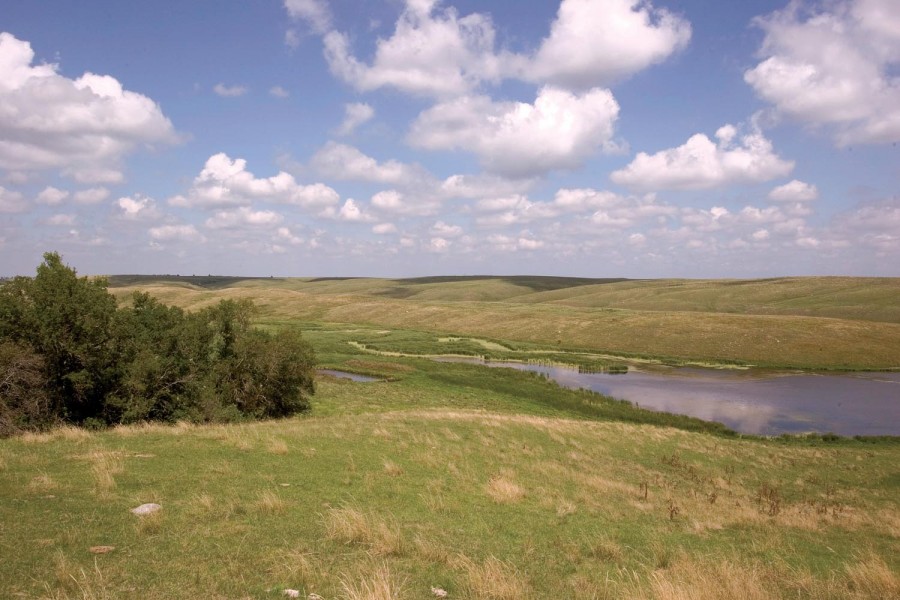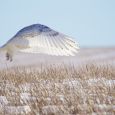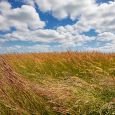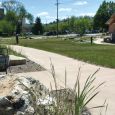The Gift of South Dakota
Subscriptions to South Dakota Magazine make great gifts!
Subscribe today — 1 year (6 issues) is just $29!
Exploring Gilley's Grove
History and unique plants highlight this Brookings County treasure
 |
| Untouched by the plow, Gilley’s Grove in northeastern Brookings County slows researchers to see what the ecosystem looked like before homesteaders arrived. |
Brookings County is farm country, but when South Dakota Magazine visited Clarence Simmons’ land northeast of White in 2008, we discovered a thick forest with history as interesting as the unique and valuable plants that grow there.
Gilley’s Grove is a natural oddity, say researchers at South Dakota State University in Brookings. “It is quite a unique area in terms of botanical diversity,” says botanist Gary Larson. “In the under story, you have a lot of species that are typical of dense, hardwood forest that we would find in central and eastern Minnesota. For South Dakota, that habitat is very restricted. We find a number of wildflowers there that aren’t found in other places.”
Gilley’s Grove is the largest wooded coulee south of Sica Hollow in Roberts County. In their book Grassland Plants of South Dakota and the Northern Great Plains, Larson and James Johnson, a former range science professor at SDSU, classify the strip of land in which Gilley’s Grove lies as tall grass prairie, an agriculturally fertile area that has largely been converted to cropland. Eons ago, glaciers eroded the steep-sided ravine on the eastern side of the Coteau des Prairies and left an unusual landscape.
“It’s a dry prairie region. It’s very hilly,” says Craig Novotny, an ecologist who has written about the grove. “There’s usually grass in the ravines of the hills, but in this particular area the forest still remains. There are probably 100-plus species of native plants out there, and a lot of those plants are valuable.”
They allow researchers to see what the prairie looked like centuries ago. There’s bur oak, green ash, and basswood, a rare tree in the area that Native Americans used to make rope. The grove contains exotic plants usually found in more eastern locales and rarely in South Dakota. There is blue cohosh, an herb monitored by the state as a rare species. Visitors in spring easily spot the Dutchman’s britches. The white flowers that resemble pants turned upside down are unmistakable.
The grove also boasts bloodroot, another spring flowering plant with delicate white flowers and toxic red sap that was once used to make dye. Jack-in-the-Pulpit is a well-known woodland species with a spike that pokes out of a pulpit-shaped spathe. The plant is sometimes confused with poison ivy because its three leaflets look similar.
The grove’s steep sideslopes have never seen a plow, so unique native plants still grow. Amid the bluestem and cordgrass is rough gayfeather, which sprouts purple, globular flowers in late summer. Another is prairie smoke, sometimes called torch flower or old man’s whiskers. It develops a wispy, pinkish red flower that looks like a puff of smoke.
People around White and nearby Hendricks, Minn., remember the grove as a high school hangout, but artifacts show its rich history goes back centuries. A French fur trapper working for the Hudson Bay Company and Indians lived in the grove before settlers arrived. For years a ring of large rocks 40 feet in diameter remained on the north edge, not far from an Indian burial mound. A dispute between Indians and the trapper in the early 1860s brought the U.S. Cavalry, which built fortifications in the grove. Old ammunition and entrenchments survived for decades.
“There’s the hanging tree,” Simmons said, pointing out an old, dead cottonwood that seemed out of place among the tall, lush oaks. In the late 1800s a local teenager was the victim of frontier justice. He was hanged in the grove for stealing a horse. Jesse James, a far more prominent outlaw, supposedly used the grove’s thick cover to hide from a posse after his gang’s unsuccessful bank robbery in Northfield, Minn., in 1876.
Gilley’s Grove is named for A.C. Gilley, who owned the land during the 1930s. Before that it was called Warren’s Woods, for owner Washington Warren, and Day’s Timber for George Day, who became the first settler in the grove when he arrived around 1870. About that time a log cabin made from the grove’s native oak trees was built, either by Day or the trapper. It has been restored and now stands in White. Other families called the grove home as well, but an old barn and chicken coop are the only buildings left.
Simmons and seven other men bought the 560 acres surrounding Gilley’s Grove primarily for hunting, but they often spend summer weekends picnicking and riding horses through the thick oak trees. As more people hear about the grove, Simmons gets calls asking for tours. “I’ve taken a lot of people out here who did not know this type of thing existed in eastern South Dakota,” Simmons says.
He’ll give tours any time, but spring is best to experience the grove’s uniqueness and diversity. “You have to go there during the growing season just to appreciate the extent of it and how different it is,” says Larson, the SDSU botanist. “You just wouldn’t guess you were in South Dakota.”
EDITOR'S NOTE – This story is revised from the May/June 2009 issue of South Dakota Magazine. To order this back issue or to subscribe, call 800-456-5117.










Comments
Also, do you know how to contact Gary Larson for a tour?
Thank you!
Sarah